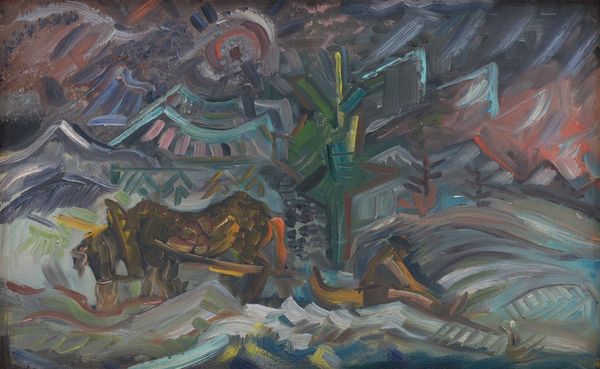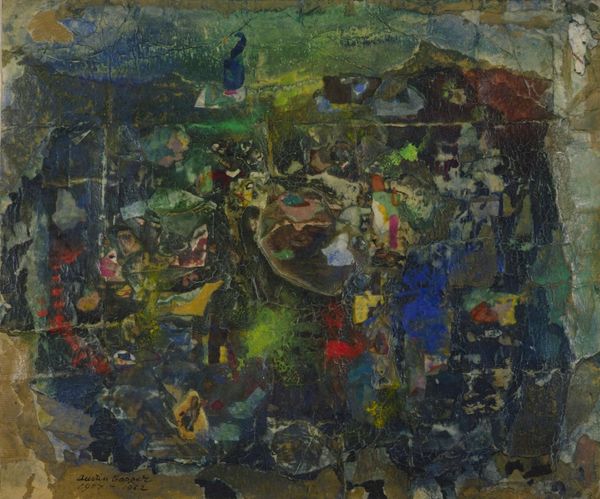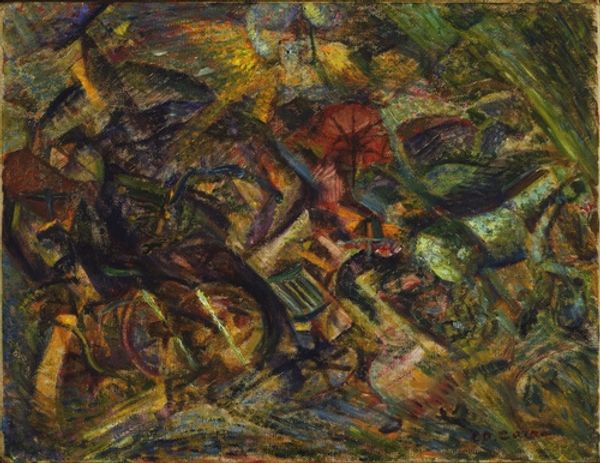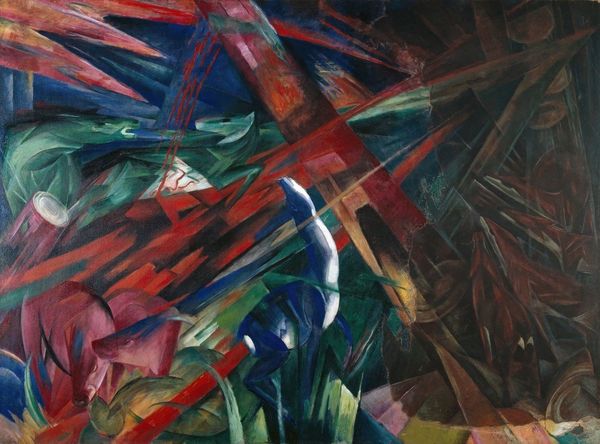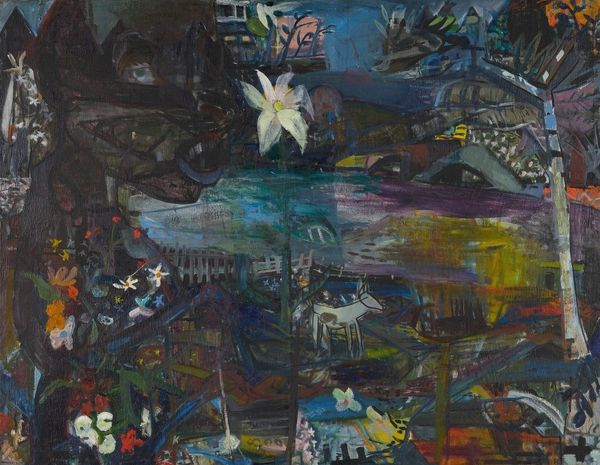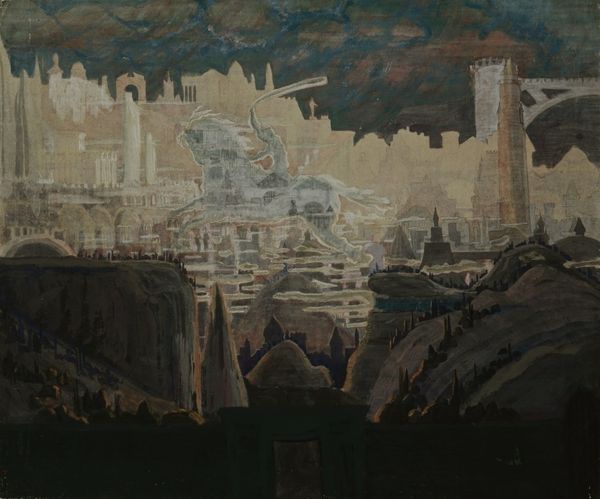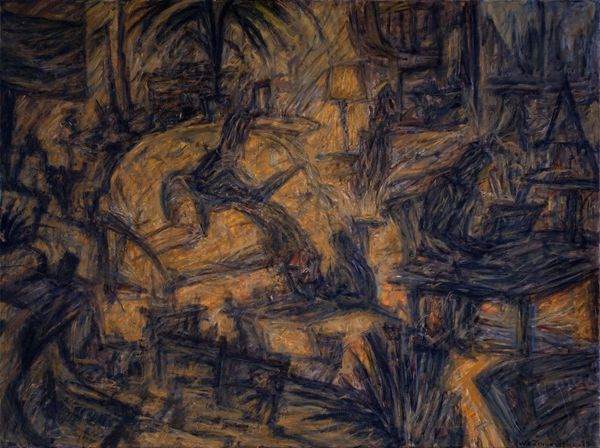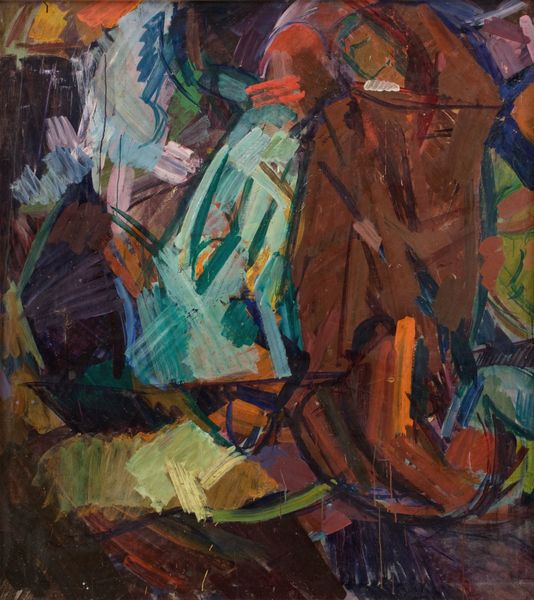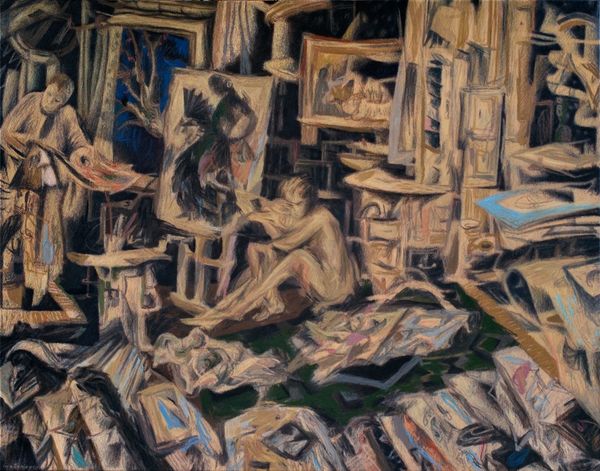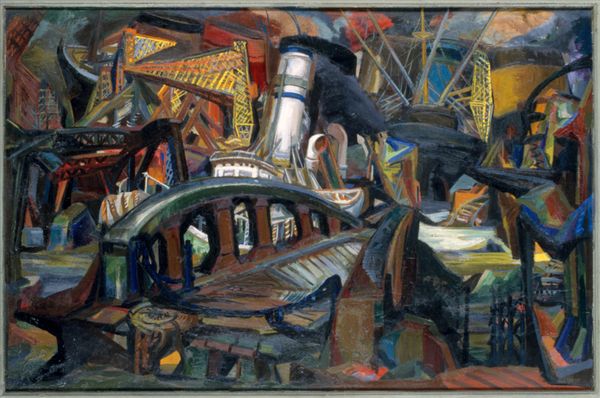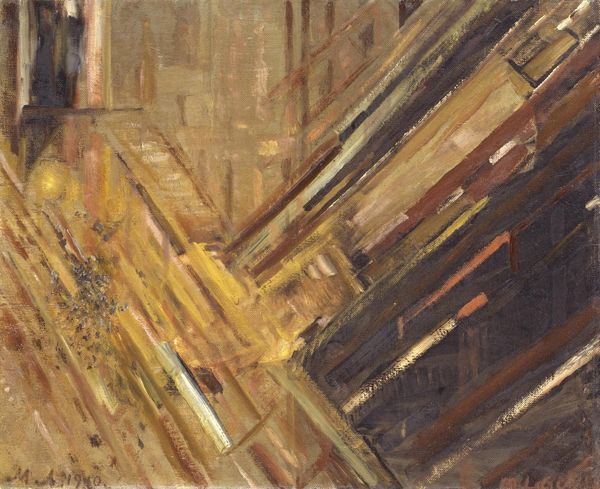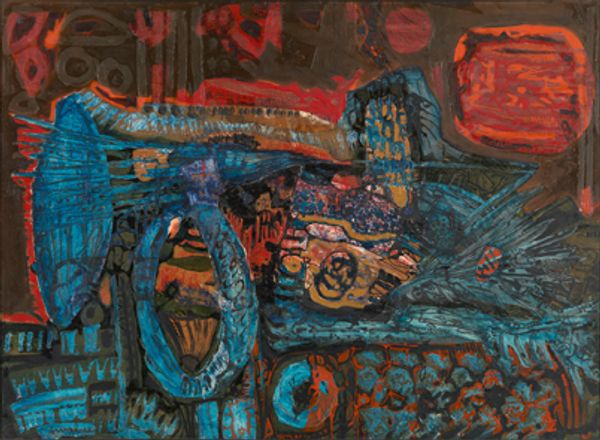
Copyright: Public Domain: Artvee
Editor: This is “Group of Men in the Woods,” painted between 1930 and 1940 by Arnold Peter Weisz-Kubínčan, rendered in oil on canvas. The palette is quite dark, almost monochrome, lending a somber and slightly unsettling feel to what might otherwise be a peaceful landscape. What do you see in this piece? Curator: What I immediately notice is how Weisz-Kubínčan uses abstraction to convey the psychological weight of the forest, moving beyond a mere depiction of trees. The vertical strokes mimic the trunks, yes, but also, perhaps, evoke a sense of confinement. Does it strike you that the "group of men" is barely discernible, almost swallowed by the environment? Editor: It does now that you mention it. It’s as though the woods themselves are the dominant figures. Almost…threatening? Curator: Perhaps threatening, or perhaps just indifferent. Forests in folklore are often places of testing, transformation, even danger. Given the period – pre-World War II – one can’t help but consider if the forest serves as a symbolic hiding place, a refuge from the dangers looming in society, or perhaps, a reflection of inner turmoil. Consider also the colors chosen—what emotions do these darker shades usually stir? Editor: I’m picking up a definite anxiety. The colors, the way the figures are lost…it does suggest a deep unease. I hadn't initially thought about it, but it's like they're trying to disappear. Curator: And disappearing can mean so many things, from seeking safety to losing identity. That interplay between visibility and obscurity is powerful. The symbols within the forest become more about an internal state, rather than a landscape, right? Editor: Right. Seeing how Weisz-Kubínčan imbued such a seemingly simple scene with complex psychological depth makes me appreciate how art reflects not just the world, but our inner selves too. Thanks for shedding some light on those connections!
Comments
No comments
Be the first to comment and join the conversation on the ultimate creative platform.
